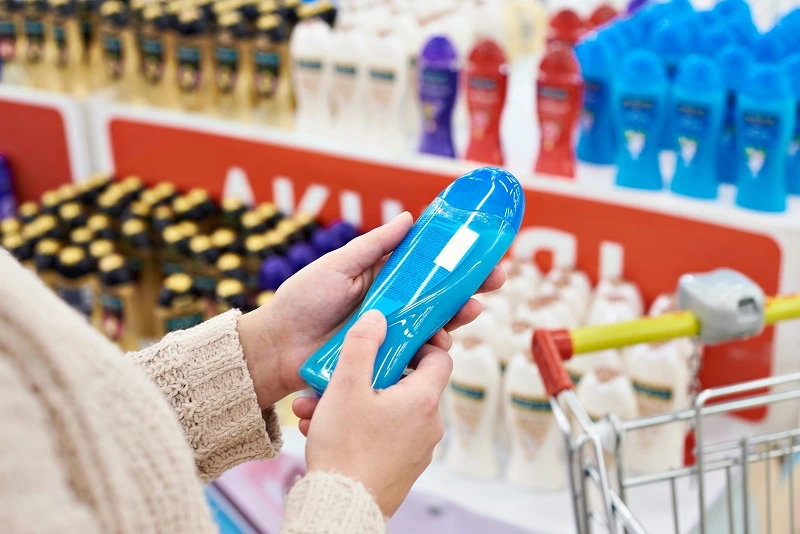Why does shampoo have instructions? No two shampoos are the same. Therefore it is always a good idea to read instructions if they are provided. There’s also a bit more to it, though than just that.
Shampoos have been around for a long time. Albeit, not always in the fanciful smelling bottles (pump top included), but we digress. Personal hygiene and hair care have been around since the Akkadian Empire in ancient Mesopotamia.
Over several millennia, it is only natural for shampoo to evolve from its original conception. With so many different shampoo formulas, each requires other instructions. For example, shampoo bars will not have the same instructions as liquid shampoo.
Likewise, sulfate-free shampoos have extra instructions compared to shampoos with sulfates. When trying a new shampoo, one should always read the instructions. To learn more about the instruction list on your shampoo bottles, keep reading ahead.
We’ll be further exploring why shampoo bottles have instructions on them and how to read shampoo labels. If you are looking for a basic guide on how to use shampoo, we will be covering that as well.
Why Do Shampoo Bottles Have Instructions On Them?
Various shampoo formulas on the market are why shampoo bottles have instructions on them. Most shampoos have the same base formula, however not reading the instructions can cause less than stellar results.
Some individuals out there suffered greasy hair after washing only to later discover they needed to let their shampoo sit. Other folk use far too much shampoo, when they should only really be using a dime-sized amount.
Instructions are important. Otherwise, products wouldn’t have them. Nothing apocalyptic will happen to your tresses by improper shampoo application: we promise. That being said, following directions can help get the most out of the product.
Switching brakes a bit, there is also a theory we need to address. There are some folks out there who theorize that shampoo instructions are a part of a money-making scheme.
Let us face it: the infamous “rinse and repeat” line is a slippery slope into wasting product. As we know, the more we use a product then the faster we will need to buy a new one.
On that note, rinsing—and repeating—can be beneficial. Those of us who use a lot of hair care products like gel, hairspray, or curling cream can certainly gain. Just don’t exceed two washes in a row unless you still feel product in your hair. Too much of a good thing can be bad.
How Do You Read A Shampoo Label?
Shampoo labels are read in descending order. For clarity, the United States Food and Drug Administration (FDA) cosmetic labeling regulations require manufacturers to list ingredients from most prevalent to least.
Whatever is the first ingredient listed on the label is the one with the highest concentration. More often than not, the topmost ingredient will be water. It is important to not only read the instructions of your shampoo but the label too.
The shampoo label can tell you what ingredients are used to make the product. It also will offer some insight into the concentration of certain ingredients. Ingredients such as formaldehyde, sulfates, and polyethylene glycols should be avoided if possible.
How Do You Use Shampoo?
Using most shampoos out there is pretty straightforward. Since so many products share the same formula, there is a lot of overlap. To use shampoo you only need access to some water and the shampoo product of your choice.
Steps to use shampoo are as follows:
- Wet your hair thoroughly. Whichever method of wetting your hair you use, make sure your hair is wet from top to bottom.
- Get a small amount of shampoo into your palm. This amount will vary depending on your hair. At minimum, use a dime-sized amount. If you require more coverage, use a quarter-sized amount.
- With both hands, massage the shampoo into your scalp. Some shampoos do not lather; it depends on the ingredients. Always make sure you have plentiful water when lathering your scalp. Water is necessary for triggering the surfactant cleaners in the product.
- NOTE: When massaging the shampoo into your scalp, do not use your nails. It is tempting, but scratching your scalp can lead to issues later down the road. Use your fingertips instead.
- Rinse the shampoo fully. As you do this, continue massaging your scalp to work out the product. Keep consistent water flow if possible to help remove the shampoo.
Is Diluting Shampoo Necessary?
Diluting shampoo is not necessary, but it is recommended by doctors. There are a few reasons for this. Diluting shampoo with water before application to the scalp and hair is beneficial for those experiencing hair loss.
Additionally, dilution knocks down the harshness of the shampoo. Now, some of you may have stopped to read that line again. Yes: shampoo can be harsh. In fact, the product can strip your hair of necessary oils that protect your strands.
Shampoo that is highly concentrated, or otherwise too harsh, can cause split ends. Though, don’t worry if you haven’t been diluting your shampoo. It isn’t listed on many shampoo instructions, nor is it completely necessary.
Some individuals may be satisfied with the current state of their hair. Others, not so much. If you find your hair dry after washing your hair, we recommend diluting your shampoo.
The same rules apply if your hair is greasy around the scalp or if you’ve noticed significant hair loss. In the instance that your hair remains the same after dilution, there may be something else awry rather than your shampoo.
Once again, while shampoo dilution is not necessary, it has doctor’s support. Diluting shampoo is up to the individual’s discretion. There is no right or wrong way to go about it.
Final Thoughts: Why Does Shampoo Have Instructions?
In all, shampoo has instructions so that you can get the most out of the product. There are different formulas out there meant to achieve different things: reading instructions is always a good idea.
On that note, using shampoo is pretty straightforward. There are always extra steps one could take when shampooing their hair. It is important to find what works best for you. Figuring out what amount of shampoo to use and the type to use could take some guesswork.
Reading the label (and the instructions) can prove to be beneficial to finding the perfect shampoo formula for your hair. If you enjoyed reading this article, check out the next article in the series: “Do Hospitals Provide Soap And Shampoo?“



